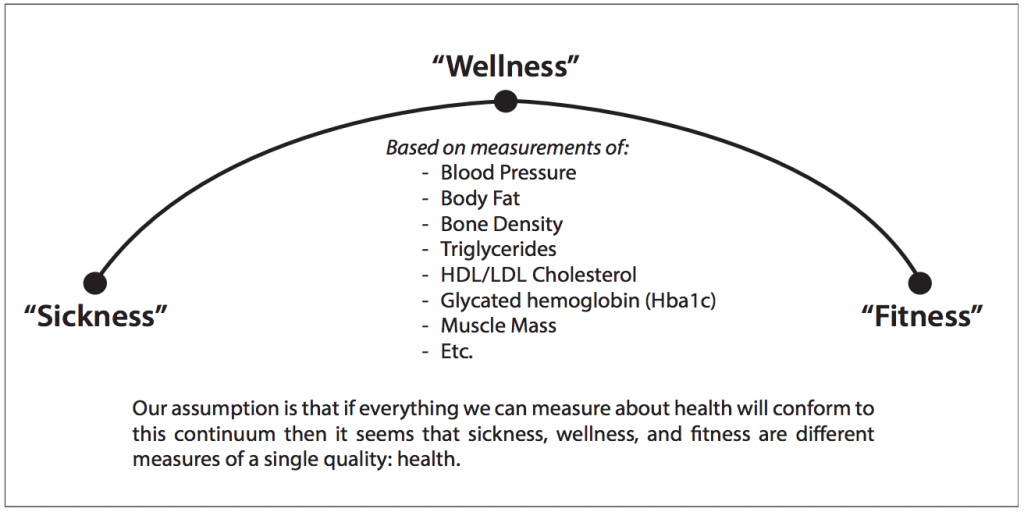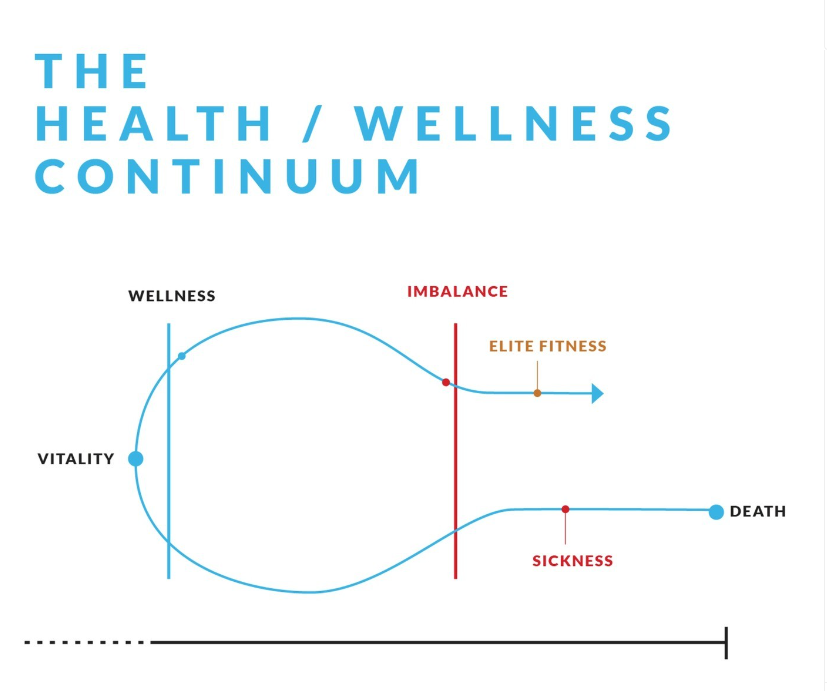At Viking Athletics, we’ve recently been exploring “wellness” by having discussions with members about what being “fit” means to them. Definitions vary from person to person, which is what we like to see. We want to know what makes our members tick, and what motivates them to continue training with us. Part of the reason for these conversations is that CrossFit has its own definition. In CrossFit jargon, fitness is “work capacity across broad time and modal domains.” They illustrate this using three examples, one of which is called the “health – wellness continuum.”

As you can see in the above picture, CrossFit defines fitness as a kind of “super wellness.” However, we believe that this spectrum is incomplete. As with most things in the fitness world, everything is about balance and moderation, including exercise and nutrition. When you’re making progress in your fitness journey, it can be easy to get swept up in things and take them to the extreme. And what was good for your health in reasonable doses, has now led to imbalance and detracted from your health.
What do we mean? Well, let’s first use professional athletes as the most obvious example. The physical tasks asked of them require almost superhuman levels of fitness. These are the elite of the elite – the best explosive athletes, or best endurance athletes, etc., on earth. To continue to operate at such high levels, sport consumes many of their lives. They don’t have much of a family life when traveling during the season. Furthermore, while it’s better now than it used to be, many athletes play through injuries. They don’t resolve them until the season is over. While still exceptionally fit, they’ve crossed back into the “unhealthy” end of the spectrum.

We see this in recreational CrossFit athletes as well. Having “visible abs” is not an uncommon goal, especially for men joining CrossFit. For women, the scale weight tends to be more of a focus. I’m generalizing here of course, but the point is, progress towards these goals becomes an obsession. So much so, that we often see these people avoid social events or family gatherings, because god forbid a salty food causes abs to disappear at night or the scale weight to trend up for a day.
These same people tend to want to do a metric buttload of extra training volume, where they, like professional athletes, increase the risk of injury. Missing a workout becomes unacceptable to them. Again, we see a healthy habit pushed to the extreme, where it can cause mental and physical discomfort. This isn’t wellness.
Part of the reason we’ve been asking our membership what fitness means to them is because fitness should enrich our lives and increase our longevity. More importantly, it should increase our vitality. In other words, we can live longer, and FUNCTION for longer. But, if we obsess over diet and exercise to the point where we can’t enjoy things like good food, or quality time with friends and family, then what’s the point of living longer? We need to remember to LIVE, rather than just being alive. Exercise and nutrition are important, but they are a means to an end, not the end itself. Keeping a healthy mindset about it is a big and often overlooked component of wellness. See you in the gym.
